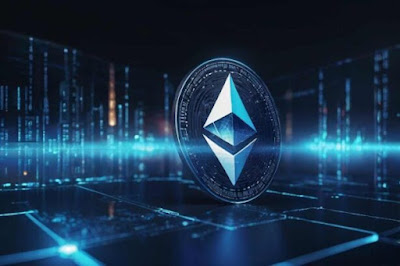Optimizing Ethereum Transaction: Strategies for Efficiency and Speed
With the rise of decentralized finance (DeFi), non-fungible tokens (NFTs), and various other decentralized applications (dApps), Ethereum has become one of the most popular blockchain platforms. However, as Ethereum's popularity continues to grow, so does Crypto Compliance Jobs the congestion on its network, leading to increased transaction fees and slower confirmation times. In this article, we'll delve into strategies for optimizing Ethereum transactions to improve efficiency and speed.
Understanding Ethereum Transactions
Before diving into optimization strategies, it's essential to understand how Ethereum transactions work. Each transaction on the Ethereum network involves sending a message from one account to another. These messages can be simple value transfers or more complex smart contract interactions.When a user initiates a transaction, they specify a gas limit and gas price. Gas is the unit used to measure the computational effort required to execute a transaction. The gas limit is the maximum amount of gas a user is willing to spend on a transaction, while the gas price determines the fee per unit of gas. Miners prioritize transactions based on their gas price, with higher fees incentivizing miners to include transactions in the next block.
Optimization Strategies
-
Gas Optimization: One of the most effective ways to optimize Ethereum transactions is to reduce gas consumption. This can be achieved by writing efficient smart contracts that minimize computational complexity. Techniques such as code optimization, gas-efficient data structures, and avoiding redundant computations can significantly reduce gas costs.
-
Batching Transactions: Instead of sending multiple transactions individually, users can batch them into a single transaction. This reduces the number of transactions processed by the network, resulting in lower fees and faster confirmation times. Batching is particularly beneficial for applications such as token transfers or decentralized exchanges where multiple transactions are executed in quick succession.
-
Optimal Gas Price: Setting the right gas price is crucial for timely transaction confirmation. Users should monitor network congestion and adjust their gas price accordingly. Various tools and services provide real-time data on gas prices and network activity, helping users optimize their transactions for speed and cost-effectiveness.
-
Use of Layer 2 Solutions: Layer 2 scaling solutions such as rollups and sidechains offer significant improvements in transaction throughput and cost. By offloading transaction processing from the main Ethereum chain, these solutions enable faster and cheaper transactions Dex Aggregator without sacrificing security. Integrating with Layer 2 solutions can be a highly effective optimization strategy for dApps with high transaction volumes.
-
Gas Token Mechanisms: Gas token mechanisms allow users to pre-purchase gas at lower prices and use it to pay for transactions later. By leveraging fluctuations in gas prices, users can save on transaction costs during periods of low network activity. Gas token mechanisms can be particularly beneficial for users with predictable transaction patterns or those seeking to arbitrage gas prices.
-
Optimized Wallet Settings: Wallet settings play a crucial role in transaction optimization. Users should ensure that their wallets are configured to use appropriate gas limits and prices based on network conditions. Wallets with customizable gas settings and support for dynamic fee estimation can help users achieve optimal transaction efficiency.
-
Avoiding Non-Essential Transactions: Minimizing unnecessary transactions can reduce congestion on the Ethereum network and improve Ethereum Transaction overall transaction throughput. Users should avoid frequent token transfers or interactions with low-value smart contracts unless absolutely necessary. By prioritizing essential transactions, users can optimize their Ethereum experience and reduce transaction costs.
Conclusion
Optimizing Ethereum transactions is essential for maximizing efficiency and reducing costs in a network prone to congestion. By employing strategies such as gas optimization, batching transactions, and leveraging Layer 2 solutions, users can enhance transaction speed and affordability. Additionally, staying informed about network conditions and using optimized wallet settings are crucial for achieving optimal transaction efficiency. As Ethereum continues to evolve, staying ahead of optimization techniques will be key for developers and users alike to navigate the challenges of a rapidly growing ecosystem. By implementing these strategies, users can unlock the full potential of Ethereum's decentralized infrastructure while minimizing the impact of network congestion.


Comments
Post a Comment